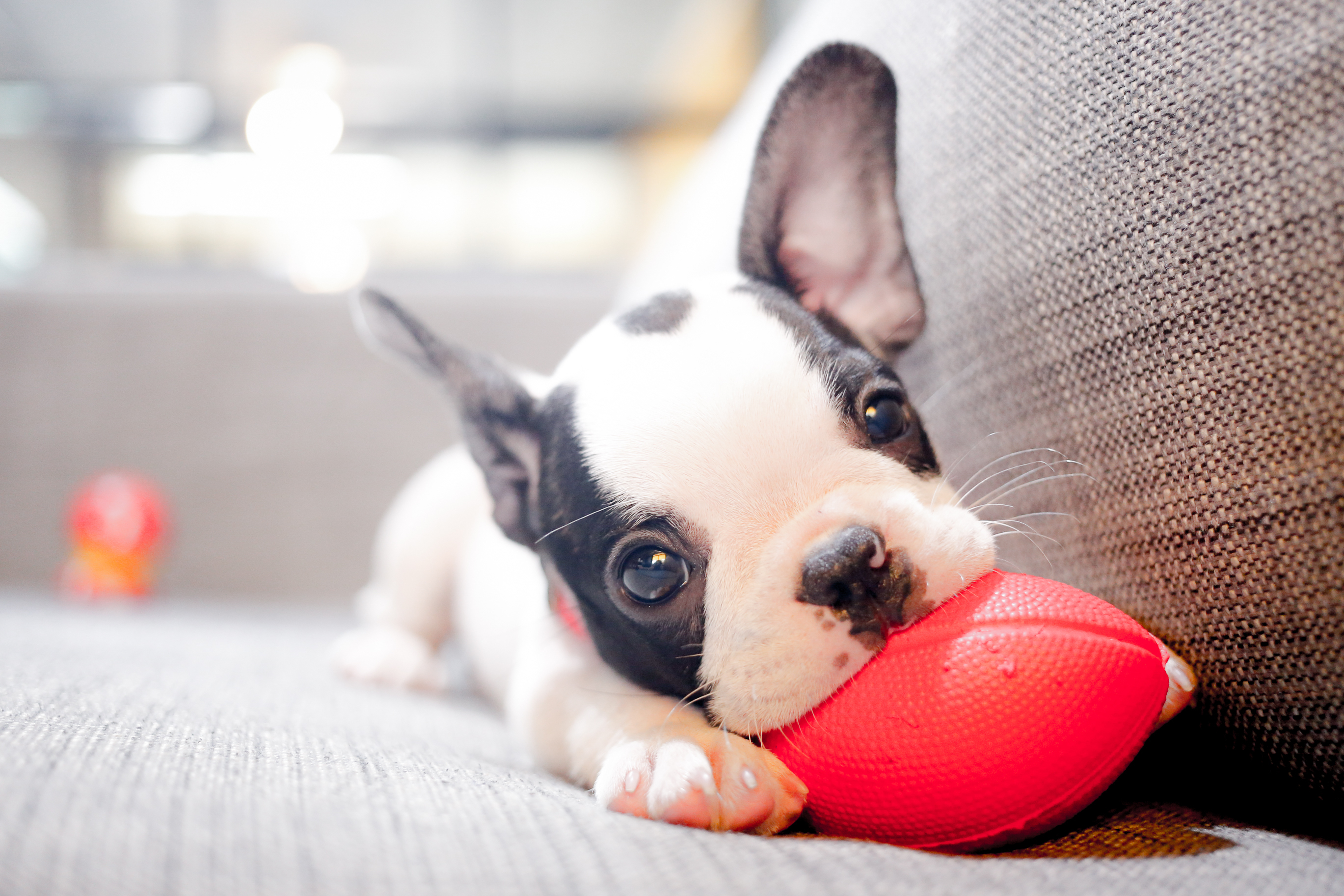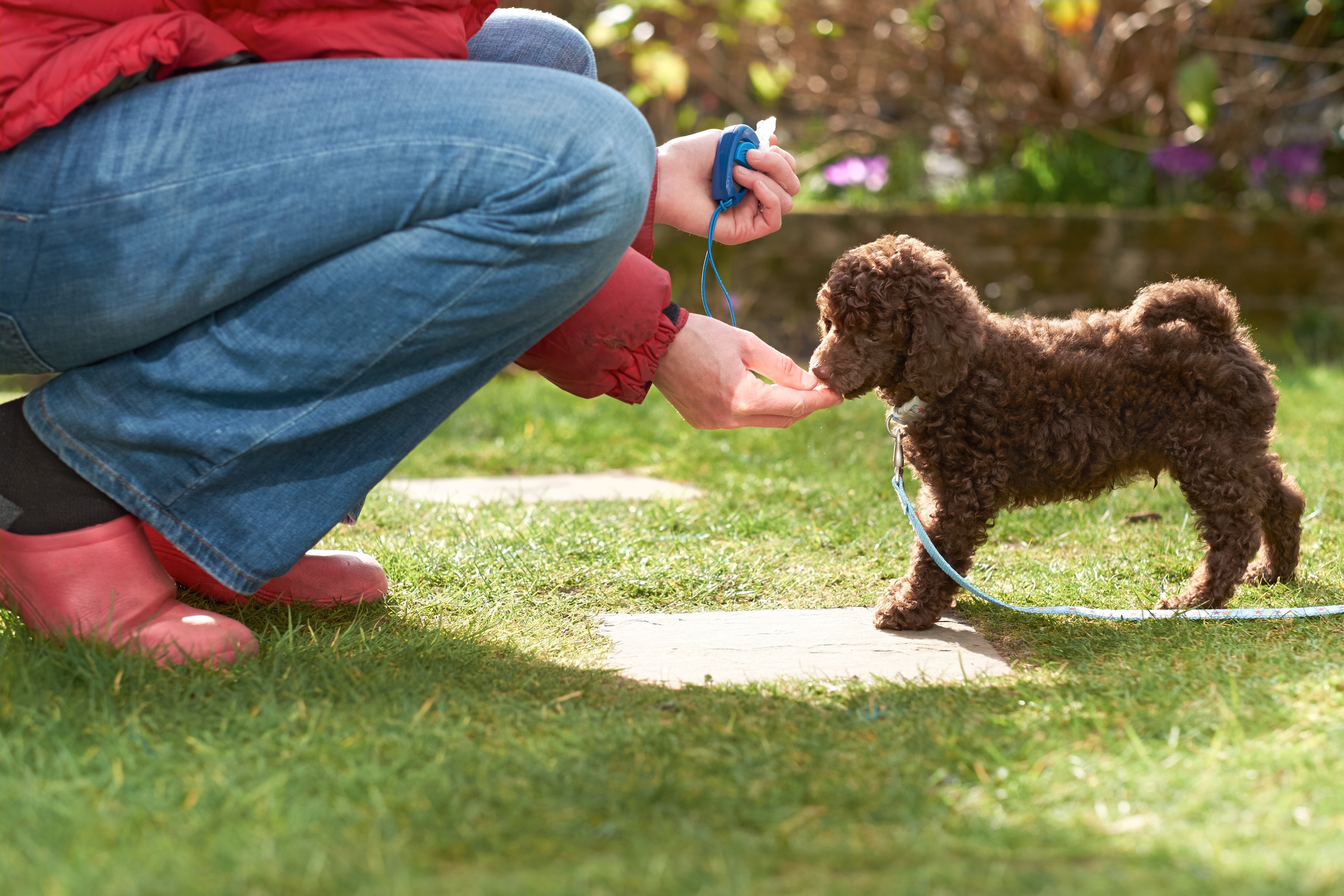Your puppy is cute right now and can do no wrong in your eyes, but later, the cuteness may wear off if he is not well behaved and trained correctly. The number one cause of death for family pets is euthanasia because of behavioral problems. Many people discard pets because they didn’t take the time to train them properly. As your puppy ages, behaviors become quickly ingrained, and some actions become more difficult to change. It is much easier to mold a puppy’s behavior and ensure that your puppy is on the right track from the start.
Most of us want to raise a well-behaved and socially adjusted canine companion. We always want to enjoy their company. We want a dog that behaves on a leash and has worry-free interactions with other animals and humans. We want a dog we can take anywhere and not worry about them. We want them to add to our experiences as opposed to distracting from them. Dog obedience training and socialization is the key to all of this! It is an essential component in raising a well-behaved dog.

When should I start training my puppy?
You should start puppy training at home between 7-8 weeks of age. Housetraining is the first area of training you will want to hone. Training outside of the home and puppy classes do not begin until your puppy has had at least two sets of vaccines.
Should I take a training class with my puppy?
Absolutely! Puppy training courses deal with many common but negative dog behavior patterns. It is a great way to get your puppy socialized. This training will help your puppy become a disciplined and well-adjusted adult dog. We strongly recommend puppy training courses for every dog and dog owner. But not every trainer is prepared to handle young puppies, so be sure that they require all puppies to have their first two sets of vaccines and thoroughly clean in between classes.
How do I socialize my puppy?
Appropriate socialization in the first few months of life is critical for the healthy social development of puppies. Proper exposure to new places and people can reduce the incidence of fear-based behavior problems later in the dog’s life. Remember that all puppies and adult dogs need to be adequately vaccinated in any social situation or if they will be in places that other dogs visit.
In a non-fearful manner, expose your puppy to all people, places, objects, and animals that you want them to be comfortable with later. Remember that it is not enough to have neutral interactions when socializing your puppy to new things. The interaction should be very positive, so you should carry treats with you wherever you go to reinforce that the child, bearded man, a person with a hat, vacuum cleaner, etc., is a beautiful thing, and good things happen when they are around.
Ways to socialize your puppy.
There are plenty of ways to get your wee pet used to being around other humans and animals.

Some of the best ways to socialize your puppy are as follows:
- Puppy Classes- A well-run puppy class should give your pup the exposure to strangers that they need. These are encouraged for all puppies; however, some puppies are timid or fearful, and these classes can be quite overwhelming for them. A trainer should be able to recognize this and counsel you on the best options for your puppy. A very frightening experience during this sensitive window of development can have long-lasting consequences.
- Happy Visits- Socialization also includes socializing your puppy to veterinary visits. Happy Visits are when you come in just to have us feed treats and love on your puppy. Having treats on hand can help you create a positive experience for your puppy. Bring something delicious with you for us to feed her. This interaction can go a long way in creating positive experiences and teach your puppy not to associate fear with the veterinary clinic.
- Vet Visits- Another vital part of veterinary visits is planning interactions that are safe for your new puppy, based on whether they have met their vaccination, testing, and preventive product milestones. This planning can vary depending on your puppy's age, breed, and size, on your family and activity level, and even on the time of year. Be sure to follow the veterinarian's instructions carefully during your puppy's series of exams and booster visits!
- Interactions with Other Dogs- Friendly interactions with other dogs during this time are also critical. Avoid uncontrolled situations like dog parks and the beach. Set up playdates with friendly and vaccinated adult dogs and puppies.
- Keep Up the Good Work!- There is a second “fear period” that occurs anywhere between four months and one year. Your pup can lose early socialization during this time, so you should make every effort to continue repeated safe exposure for a full year. Some typical puppy behaviors resolve with social maturity, which occurs between 1-3 years.
Do I need a trainer?
You would greatly benefit from an experienced trainer’s help during this time, but it is not necessary. Keep in mind that you have a lot to learn, possibly even more than your puppy. There are tons of videos and books out there that can help you learn how to train your dog. Make sure you dedicate time to training sessions with your dog. Working on the basics of sit, lay down, and stay, can go a long way towards having well-behaved pooch! Keep in mind that your interactions with your dog can lead to some good behavior from your puppy.
Is it a good idea to send my puppy away to doggy boot camp/training?
We do believe that you are the biggest component of having a well-trained dog. For that reason, Dr. Dolan does not recommend that our clients send their dogs away for obedience training. We feel very strongly that you must take an active role in training your dog. The more involvement and understanding you have in your dog’s training, the more successful it will be. If you are at home and your dog is not there, you cannot have an active role in their training.
Also, when you send your dog away for training, there are just so many unknowns. Not all trainers use humane and reliable methods, and we strongly recommend against pursuing radical or inhumane forms of dog training. How do you know that you can trust them with the newest member of your family? Dr. Dolan has seen patients that have returned from training with fear-based behavior issues that even he could not rectify. He has had behavior cases that developed into unsafe situations for the family and ultimately led to euthanasia.
Guidelines for Selecting a Dog Trainer
The Merck Veterinary Manual offers the following things to look for in trainers to get your dog on the path to good manners and happiness:
- Look for trainers who use positive reinforcement for good behavior rather than punishment for unacceptable behavior.
- Observe an obedience class without your pet. Are the dogs and people having a good time? Talk with some of the participants after the class. If someone will not let you sit in on a class, do not enroll.
- Make sure that the facility thoroughly cleans after each class Do not allow trainers to work with your dog unless they tell you beforehand exactly what they plan to do.
- Do not be afraid to tell a trainer to stop if she or he does something (or tells you to do something) to your dog that you do not feel comfortable with. Avoid trainers who offer guarantees. Such trainers are either ignoring or do not understand the complexities of animal behavior.
- Avoid trainers who object to using food as a training reward. Food is one of the best ways to motivate a dog.
- If you believe your dog has been subjected to cruel treatment by a trainer, get the names and phone numbers of witnesses.
Which training method works?
There are many different dog training approaches, and recommendations naturally vary depending on the training’s goal. For basic obedience training and almost all training, Dr. Dolan recommends positive reinforcement.
What is positive reinforcement?
Positive reinforcement is when you immediately reward your pet for doing something right so that the frequency of the demonstrated behavior rises. Example: You ask your dog to sit, they sit, and you give the dog a treat. The pup is now more likely to sit the next time you ask them because you have reinforced the behavior by giving a treat.

What kind of rewards should I use for training?
Food is the best reward to use for training your dog. It is efficient and can be delivered immediately.
What treats should I use for training?
Dr. Dolan is a big fan of Lean Treats. Lean Treats are made with real, skinless chicken. They are made in the USA, low-fat, bite-sized, highly palatable, and only seven calories per treat. Pick something that your dog likes so that it will motivate them. You might have to try a few types of treats to find ones that excite them. Check the ingredients and make sure that you approve of its nutritional value.
If you are using human food, make sure it is safe and non-toxic to your pet. For example, some meat products will contain onions and garlic; sometimes, reduced-fat peanut butter has Xylitol. Avoid overfeeding them with treats. Use bite-sized or even pea-sized treats if you are doing a lot of training. Save the very best treats for more difficult tasks.
If your dog is on a special diet, be sure to consult your veterinarian before changing anything in their diet. But if you have a dog that is enthusiastic about their special diet, you can give them kibbles of their food as treats or use the canned version as their treats.
What is the first thing I need to work on?
Housetraining is a top priority! After you know that your dog is healthy and well, let’s start with house training. This task can be the most challenging part of training your pet. The more effort that you put in now, the happier you will be later. In the past decade, “crate training” has become the most popular form of house training. First, you need to buy a kennel or crate with a locking door that is big enough for your dog to fit in comfortably as an adult. Think of this as their room or playpen. Until they are house-trained and trustworthy, they will need to either be under your direct supervision, outside, or in the crate. You need to think of your puppy like a toddler; if you cannot watch them, they need to be in a safe place.
Keeping them safe and secure also means puppy-proofing the backyard too. Do not put them in a bathroom, utility room, or kitchen, because they will learn to use the restroom in the house. They will not go to the bathroom in the crate unless they cannot hold it any longer or if they’re used to being in dirty surroundings. Solely following this rule, your puppy should never go to the bathroom in the house except for in his crate.
For the best chance of getting your new puppy house trained as quickly as possible, we suggest using a unique food reward, like Lean Treats, to reinforce the correct behavior. When your puppy uses the bathroom outside, praise them, and immediately give a treat. Don’t wait until your puppy comes back to the door or inside, as this will cause them to think you’re rewarding them for coming inside, not going to the bathroom.
If you have any other questions about training your pup to provide a happy and healthy future for them, just give us a call!

